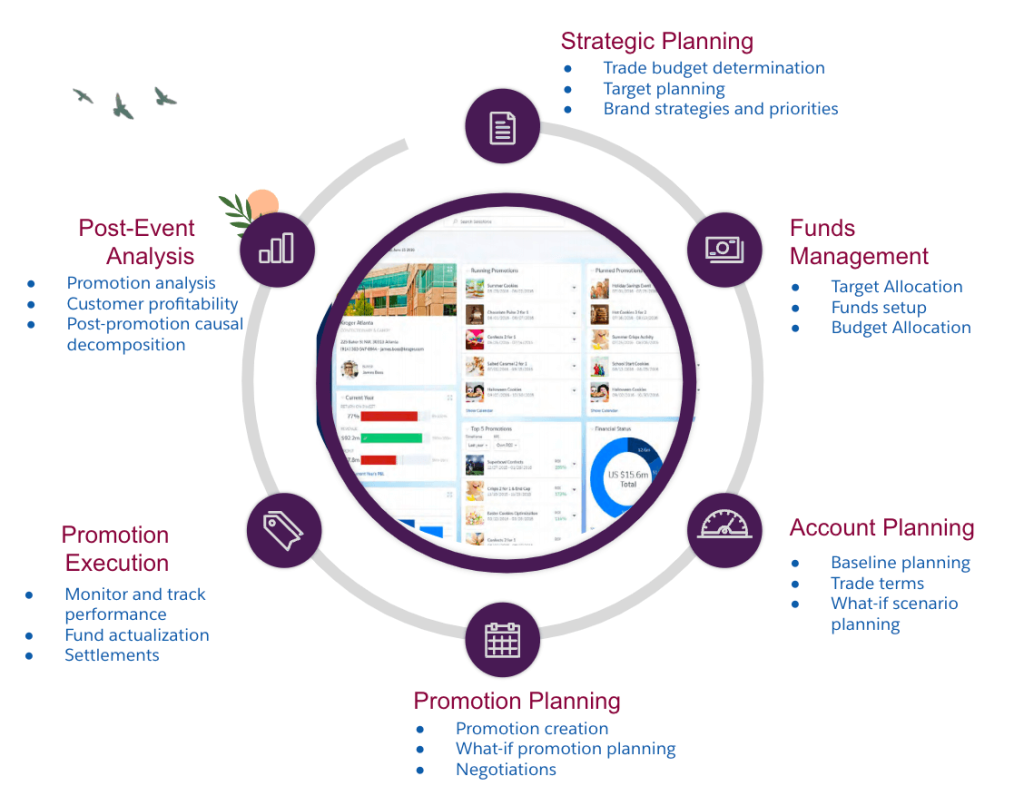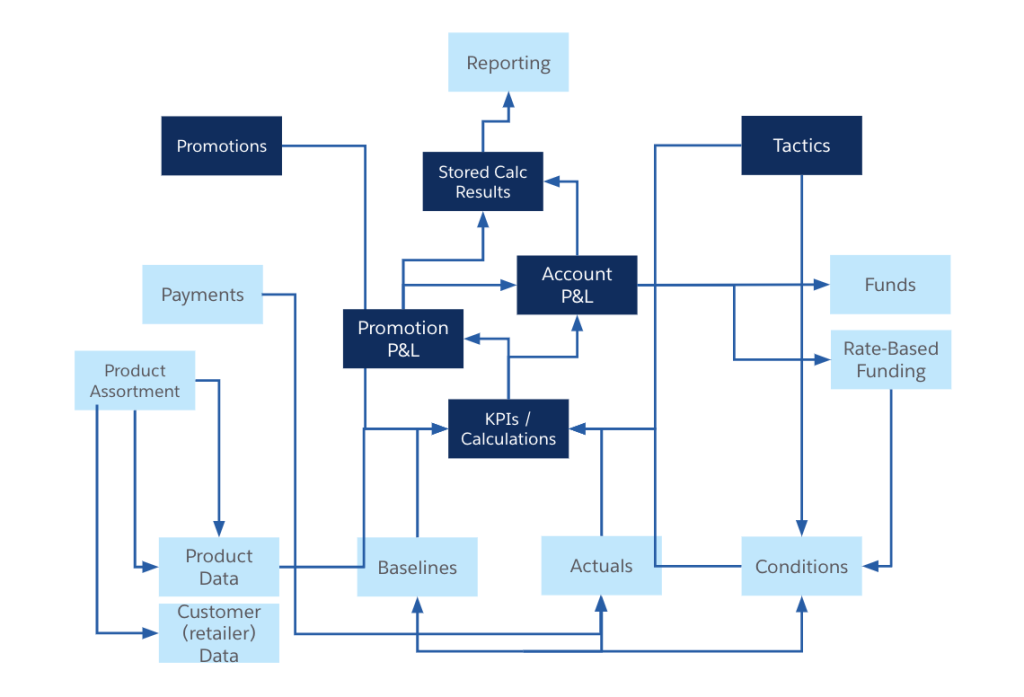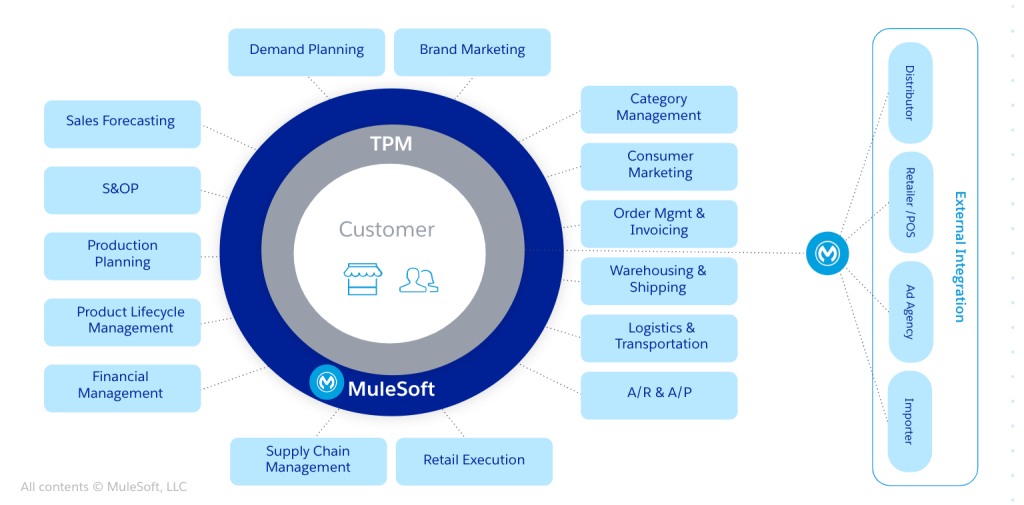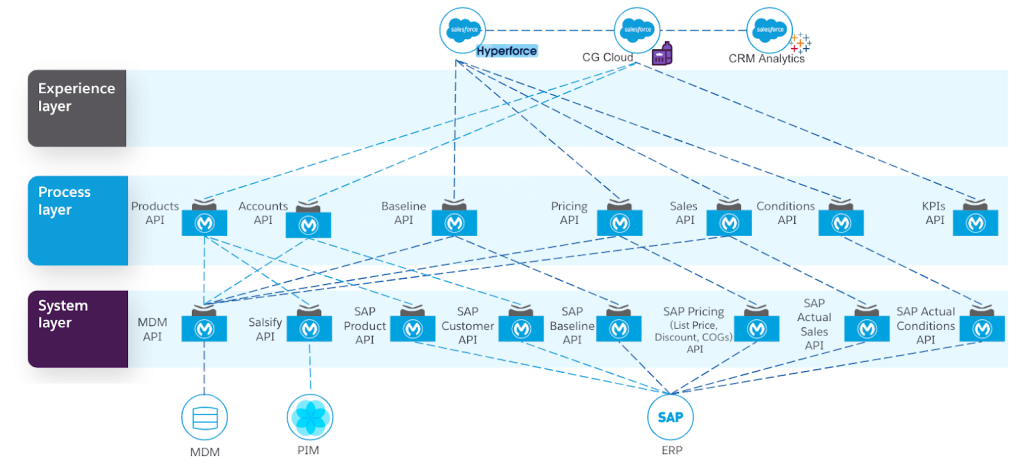How effective is your trade promotion strategy and execution? Is your promotional spend – the second largest expense at your company – giving you the expected returns? Is your trade promotion management (TPM) solution powered with all the required data to provide the highest value with the right insights?
What is Trade Promotion Management (TPM)?
Promotions are key for consumer goods companies to improve sales, introduce new products, beat out competitors, and acquire more market share. Retailers expect them, but more importantly, end-consumers expect them.
Trade Promotion Management (TPM) is the process of planning, budgeting, presenting, and executing “incentive” programs which occur between consumer goods companies and retailers. A typical TPM process involves several steps, as shown in the graphic below.

With consumer goods companies spending anywhere between 11–27% of their revenue on trade promotions, it’s imperative that the solution entrusted with TPM is part of the digital transformation journey.
So how do you ensure that your TPM solution is highly effective?
4 key areas to focus for an effective TPM
An effective TPM strategy should focus on four areas: people, processes, data, and systems.
- How quickly can you roll out the TPM solution across the company to all the stakeholders and enable users to leverage the solution?
- How can you launch the TPM solution efficiently for additional countries/geographies?
- How do you make sure your TPM solution adapts to changes in business processes driven by industry and consumer trends?
- Does the TPM solution have access to all the requisite data spread across disparate systems?
- Types of data: Products, Accounts, Customers, Territories, Sales, Pricing, Promotional Data, Baseline, Conditioning, Calendars, Supplier, Sustainability, Payment, Shipment, etc.
- Systems where this data resides: Enterprise Resource Planning Systems (ERP), Product Information Management System (PIM), Sourcing & Procurement System, Master Data Management System (MDM) , Accounting, Marketing, Nielsen or IRI, etc.
- Data frequency: Real-time, daily, weekly, etc.
- Data models and formats:

These areas of focus call for a sound data and system integration strategy.
Trade promotion management integration strategy
Let’s dive into the components of a proper TPM integration strategy.
- Rapid delivery: Leverage a platform that can deliver from design to go-live and can quickly adapt to changing business processes to reduce integration lead time. This platform should have ready-made accelerators and connectors to all the systems that the TPM solution needs to integrate with.
- API-led and event-driven architecture: Adopt event-driven constructs for delivering real-time data into TPM and API-led connectivity for decoupled microservices and a future-proof modern architecture.
- Composable: Build APIs and modular integration blocks that can be reused, built upon to maintain data integrity from source systems (ERP, PIM, etc.), and to avoid duplication.
- Integration patterns: Depending on the data refresh interval and size, it’s important to adopt multiple integration patterns: real-time (i.e. pricing updates) and batch (i.e. product catalog from MDM).
- Data transformation: Leverage an integration platform that has powerful data transformation capabilities to handle multiple types of data formats and models.
- Automation: Use Robotic Process Automation (RPA) to automate repetitive manual TPM tasks like data (Payments, Funds, Promotions, Reports, etc.) entry, data extraction and validation.
- Secure by design: Apply security and data protection via policy (granular or global) enforcement for all the integrations.
- Centralized governance: Adopt a standard approach and visibility on design, build, and operations by centralized policies, auditing, and monitoring.
- Cloud-native/multi-cloud: Build decentralized/distributed integrations with microservices that are resilient, have the ability to scale at will, can run in any environment (iPaaS, OnPremise), and can integrate with systems across multi-cloud and SaaS.
Anypoint Platform for connected TPM
MuleSoft Anypoint Platform aligns with all the tenets of the TPM integration strategy listed above.
You can accelerate application delivery by building APIs and integrations with speed and quality:
- Jumpstart development using pre-built assets with MuleSoft’s Accelerator for Consumer Goods: TPM use case, plus access connectors for ERP and PIM systems.
- Build APIs rapidly for integration with TPM systems over diverse protocols.
- Transform data automatically, test your APIs and integrations, and plug your enterprise integrations into CI/CD pipelines.
Ensure automated and consistent security for your APIs and data:
- Secure TPM integrations automatically with prebuilt and custom policies.
- Govern every API – regardless of their origin or environment, per industry regulations and industry standards without development overheads.
Manage and monitor your APIs and services comprehensively:
- Manage, secure, and scale all your APIs from a single place. Observe your APIs and integrations holistically in real time. Monitor, diagnose, and troubleshoot your operations comprehensively to identify and resolve issues quickly.

MuleSoft Accelerator for Consumer Goods TPM
The MuleSoft Accelerator for Consumer Goods includes prebuilt assets such as APIs, implementation templates and reference architectures to make TPM integration implementations three times and easier for our customers.
MuleSoft Accelerator for Consumer Goods focuses on bringing critical data (product, customers, hierarchies, baseline, conditions, and pricing) from ERP, PIM, and MDM systems into TPM platforms like Salesforce Consumer Goods Cloud to enable consumer goods companies to establish accuracy and improve trade effectiveness.

In addition, it will enable consumer goods companies to gain insights on critical data points to evaluate trade performance and track KPIs needed for promotion.
To learn more, check out our recent webinar about MuleSoft’s Accelerator for Consumer Goods.









